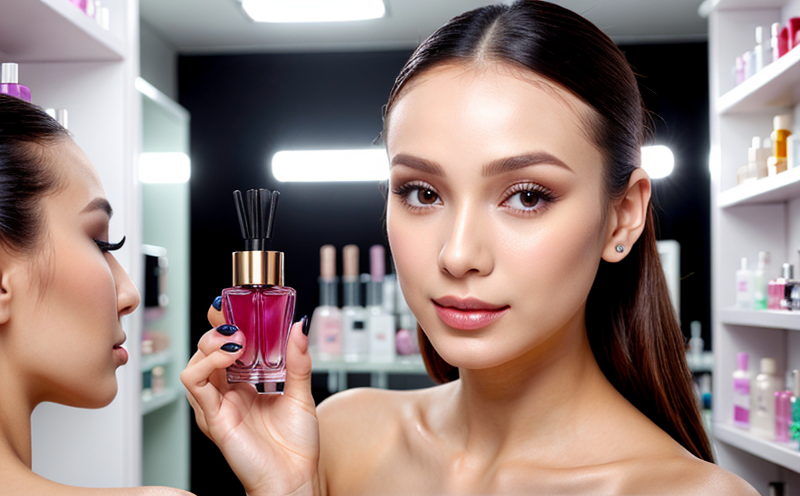Linalool Oxidation Testing in Perfumed Cosmetics
In the cosmetics industry, fragrance and perfume are pivotal elements that contribute to a product's appeal. One of the key ingredients frequently used is linalool, an alcohol with a floral aroma widely found in natural products such as lavender oil. However, linalool can be prone to oxidation over time, leading to changes in its chemical structure and sensory properties. To ensure that perfumed cosmetics maintain their quality and safety throughout the shelf life, linalool oxidation testing is essential.
This test assesses whether linalool has undergone undesirable oxidative degradation during storage or use. Oxidation can result in off-flavors, reduced fragrance stability, and potential changes in the overall sensory profile of the perfume. The test helps manufacturers ensure that their products meet regulatory standards while also maintaining consumer satisfaction.
Standard methods for assessing linalool oxidation include gas chromatography (GC) with mass spectrometry (MS), which can detect the formation of specific degradation products like (E)-trans-2-hexenal and (Z)-trans-2-hexenal. These by-products indicate that linalool has undergone oxidative reactions, thereby compromising its quality.
The testing process involves the following steps:
- Sampling: Representative samples of the perfume are taken from different batches or storage conditions to ensure a broad evaluation.
- Preparation: Samples undergo extraction procedures using solvents like hexane, followed by derivatization if necessary to enhance detection sensitivity.
- Analysis: The prepared samples are injected into the GC-MS system for analysis. The retention times and mass spectra of identified compounds help in quantifying linalool and its degradation products.
The results provide actionable insights on the degree of oxidative stress, which can guide process improvements or adjustments to storage conditions. Compliance with standards like ISO 29143:2021 ensures that the testing methods align with international best practices.
Scope and Methodology
The scope of linalool oxidation testing encompasses evaluating the stability of linalool in perfumed cosmetics under various conditions. This includes assessing the impact of temperature, humidity, light exposure, and storage duration on the chemical integrity of the fragrance ingredient.
The methodology typically involves:
- Sample Preparation: Properly extracting and preparing samples for analysis is crucial to obtaining accurate results.
- Analytical Techniques: Advanced analytical methods such as GC-MS are used to identify and quantify linalool and its degradation products.
- Data Analysis: Statistical tools help in interpreting the data, comparing it against baseline values, and determining compliance with relevant standards.
The methodology ensures that any changes observed can be directly linked to specific storage or processing conditions. This allows manufacturers to optimize their production processes and improve product quality.
Why Choose This Test
- Promotes Quality Assurance: Ensures that perfumed cosmetics retain their original sensory qualities and do not undergo undesirable changes.
- Enhances Consumer Confidence: By ensuring product stability, it helps maintain consumer trust in the brand.
- Aids Regulatory Compliance: Aligns with international standards such as ISO 29143:2021 and other relevant regulations.
- Saves Costs: Identifies issues early on, preventing costly recalls or product reformulations later in the supply chain.
The test is particularly beneficial for quality managers and R&D engineers looking to refine their production processes and ensure consistent product quality. Compliance officers can leverage these insights to stay ahead of regulatory requirements.
Competitive Advantage and Market Impact
- Innovation Leadership: By continuously monitoring linalool oxidation, manufacturers can innovate new formulations that offer superior stability and performance.
- Differentiation in the Market: Ensuring high-quality products sets companies apart from competitors, enhancing their market position.
- Premium Brand Image: Consistent quality translates to a premium brand image, attracting discerning consumers willing to pay for superior products.
The ability to conduct this test effectively can give businesses a significant competitive edge in the highly competitive cosmetics industry. It also contributes positively to the overall market by ensuring that consumers receive consistently high-quality products.





